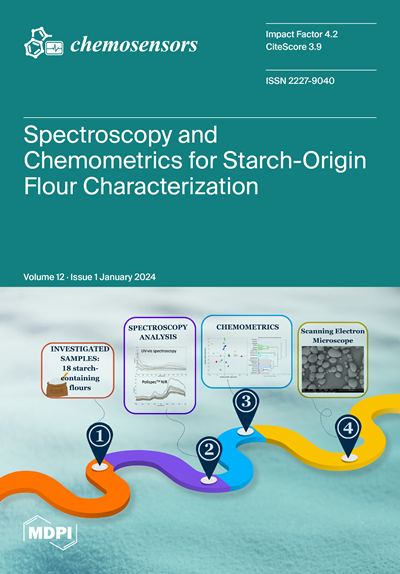照亮缺乏组氨酸的细胞内环境:一种新型全细胞微生物荧光传感器
IF 3.7
3区 工程技术
Q2 CHEMISTRY, ANALYTICAL
引用次数: 0
摘要
组氨酸是一种对人体生长和神经调节具有重要意义的必需氨基酸。其细胞内浓度升高或降低,可提示不同的疾病。虽然存在各种测量组氨酸水平升高的方法,但仍然严重缺乏能够主动响应细胞内组氨酸缺乏并释放强信号的传感器。在这项研究中,我们利用鼠伤寒沙门氏菌(S. Typhimurium SL1344)中his操纵子的高诱导水平,在组氨酸缺乏的环境中开发了一种对低组氨酸浓度敏感的特异性细菌传感器。通过使用具有不同拷贝数的质粒载体,我们开发了两种不同的细菌荧光传感器,它们都能够主动响应组氨酸缺乏,并在培养基或活细胞中发出可检测的荧光信号。SL1344-pGEX传感器具有较高的拷贝数,在0 ~ 50 μM范围内对组氨酸具有良好的灵敏度和选择性。值得注意的是,即使在M9培养基中添加最小的组氨酸(约2.5 μM)也会导致可观察到的荧光减少,使其非常适合监测组氨酸缺乏的细胞环境。相比之下,低拷贝数SL1344-pSB3313传感器表现出更广泛的响应范围,能够跟踪更广泛的组氨酸浓度变化。这些传感器允许在各种活细胞中敏感地原位检测细胞内组氨酸浓度,特别是响应细胞组氨酸水平的实时变化。这为研究组氨酸缺乏相关的生物学过程、相关疾病的机制以及评估和优化治疗策略提供了有力的工具。本文章由计算机程序翻译,如有差异,请以英文原文为准。
Illuminating Histidine-Deficient Intracellular Environments: A Novel Whole-Cell Microbial Fluorescence Sensor
Histidine is an essential amino acid with significant implications for human growth and neuromodulation. Its intracellular concentration, whether increased or decreased, can indicate different diseases. While various methods exist for measuring elevated histidine levels, there remains a significant lack of sensors capable of actively responding to histidine deficiency within cells and releasing strong signals. In this study, we exploited the high induction levels of the his operon in S. Typhimurium SL1344, a histidine auxotroph, within a histidine-deficient environment, to develop a specific bacterial sensor with sensitivity towards low histidine concentrations. By employing plasmid vectors with differing copy numbers, we developed two distinct bacterial fluorescence sensors, both capable of actively responding to histidine deficiency and emitting detectable fluorescence signals within either culture mediums or live cells. The SL1344-pGEX sensor, with a high copy number, exhibited remarkable sensitivity and selectivity to histidine in the range of 0 to 50 μM. Notably, even a minimal addition of histidine (approximately 2.5 μM) to the M9 medium led to observable fluorescence reduction, rendering it highly suitable for monitoring histidine-deficient cellular environments. In contrast, the low-copy-number SL1344-pSB3313 sensor exhibits a broader response range, capable of tracking more extensive shifts in histidine concentrations. These sensors allow for sensitive in situ detection of intracellular histidine concentrations in various live cells, particularly responding to real-time changes in cellular histidine levels. This provides a powerful tool for investigating histidine deficiency-related biological processes, the mechanisms of associated diseases, and the assessment and optimization of therapeutic strategies.
求助全文
通过发布文献求助,成功后即可免费获取论文全文。
去求助
来源期刊

Chemosensors
Chemistry-Analytical Chemistry
CiteScore
5.00
自引率
9.50%
发文量
450
审稿时长
11 weeks
期刊介绍:
Chemosensors (ISSN 2227-9040; CODEN: CHEMO9) is an international, scientific, open access journal on the science and technology of chemical sensors published quarterly online by MDPI.The journal is indexed in Scopus, SCIE (Web of Science), CAPlus / SciFinder, Inspec, Engineering Village and other databases.
 求助内容:
求助内容: 应助结果提醒方式:
应助结果提醒方式:


